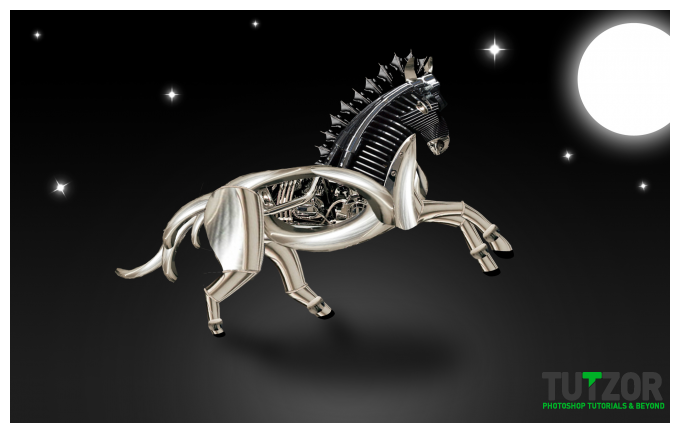
Light Effect On A Model Light is a cool subject to talk about. After reading some articles about light effect, I decided to write a tutorial showing how to create a very spectacular light effect around a model. Before that, I will show you a quick technique to retouch portrait and bring new look on it, step by step
Step 1: Open a new document, I used 800x600 pixels and look for a model photo on the internet, this is the one I used:
After downloading, place it on your document. Now we will start to retouch it!
Step 2: As you can see, it is a bit dark so we should make it brighter first. Duplicate your photo by pressing
Ctrl-J and change its blending mode to
Screen. Simple, right?
It is now better. Merge down this layer donw by pressing
Ctrl-E. After that, duplicate it again and go to
Filter>Blur>Gaussian Blur and use a value of
4.5 pixels
Step 3: Change the blending mode to
Overlay and merge it down. The model now looks wonderful!
Step 4: Next we will add some light on her. Use the
Pen tool and make some point around the dark areas of the model, don't need to be so exact
Step 5: Convert this path into a selected area, you can save this area for later use by going to
Select>Save Selection
Step 6: Create a new layer and go to
Filter>Render>Clouds and
Filter>Artistic>Plastic Wrap, just use the default values
Now change its blending mode to
Color Dodge. Your photo may look a bit different:
Step 7: In the next steps, we will add light effect on the model. Use the
Pen tool to draw some curves on her
Step 8: Reset your colors by pressing
D and invert them by pressing
X. Choose the
Brush tool and go to
Window>Brushes to open the Brushes panel. Pick a
small brush (about 5 pixels) with 0% hardness and tick on
Shape Dynamics. Create a new layer, choose the
Pen tool again, right click and choose
Stroke Path. Make sure you tick on the
Simulate Pressure before pressing OK
A small curve, thinner at two ends appear like this:
Step 9: Repeat step 8 again but this time we also tick on the
Scattering checkbox (make sure you make it on a new layer)
After choosing Stroke Path, we get
Now we can delete the path by pressing Enter. Double click on your two new created layers to open
Layer Style dialog box. Use
Outer Glow as following:
Use the
Eraser tool to delete some light areas, the glowing light seems to surround her. After this step, we get:
Step 10: Make our light effect stronger by duplicate the "glowing dots" layer. Press
Ctrl-I to invert its colors
Change the blending mode to
Overlay. And this is the result:
This technique can be used in various ways but the principle is still the same. Hope you enjoy this tutorial.
 Light Effect On A Model Light is a cool subject to talk about. After reading some articles about light effect, I decided to write a tutorial showing how to create a very spectacular light effect around a model. Before that, I will show you a quick technique to retouch portrait and bring new look on it, step by step
Light Effect On A Model Light is a cool subject to talk about. After reading some articles about light effect, I decided to write a tutorial showing how to create a very spectacular light effect around a model. Before that, I will show you a quick technique to retouch portrait and bring new look on it, step by step 

































































